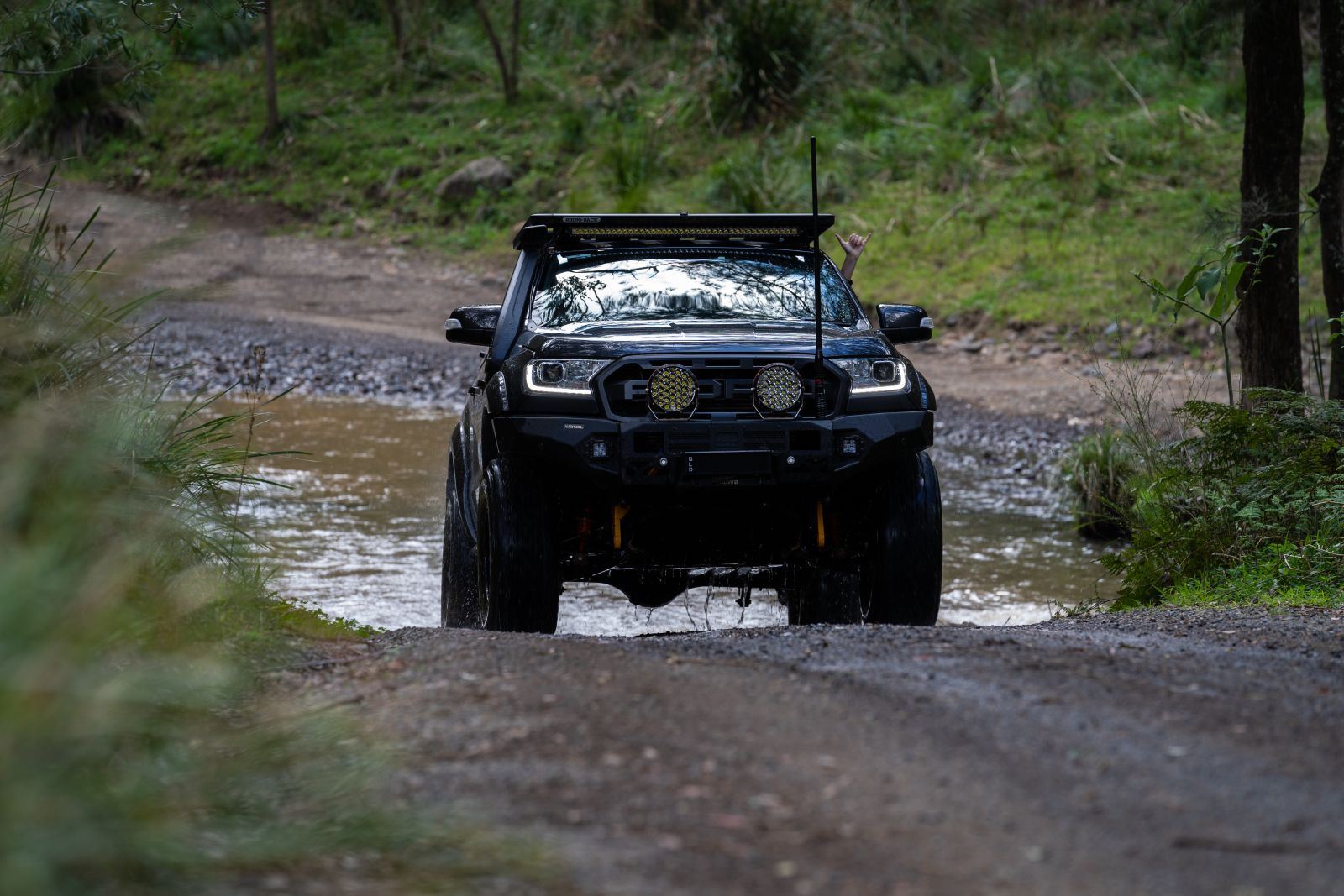
River crossings are probably one of the most exciting things you can do in your 4WD. Getting to the other side with your car (or yourself) unscathed is an amazing accomplishment and will really make you feel like a seasoned 4x4 expert. However, a 4x4 river crossing can be still be nerve-wracking, even for some experienced drivers. There’s a lot you have to consider – so let’s look at some helpful tips for 4WD river crossings, as well as some common issues you might have after driving through water.
Check The River Before You Go:
It’s a bit of a no-brainer, but take a moment to hop out of your vehicle and assess the river you’re planning to cross. You’re looking for a few things in particular: the length of the crossing, the depth of the water, what’s on the bottom, and how fast the water is moving. Test the waters for yourself (if it’s safe to do so, of course – don’t go hopping into croc-infested waters or anything) to help determine the water’s speed and what you’ll be driving over. Moving water that’s higher than your vehicle’s undercarriage will push against it, running the risk of washing you downstream.
Find The Right Tyre Pressure:
Once you’ve arrived at the river crossing and determined what’s on the riverbed (rocks, mud, etc), you’ll need to adjust your tyres accordingly by airing down. This is not optional. Make sure you tyres are aired down to at least 20psi so you can get more grip on river beds. There's several ways you can do this quickly and accurately. Pick up a set of Tuff Terrain tyre deflators to deflate all four tyre deflators at once or use a tyre gauge. If you’re looking at sand or mud, lowering the tyre pressure to around 15psi is recommended, but if you’re going to be driving over slippery rocks, a psi somewhere from the teens to low 20s will get you across. If the riverbed is firm and compact, you will be able to get across with higher tyre pressure.
Be Prepared For The Worst:
Not to sound too negative, but planning for the worst will inevitably be a good thing when it comes to crossing rivers and other bodies of water in your 4x4. This actually applies to other areas of 4x4 touring as well: being prepared before you go into any situation will give you a better chance of getting yourself and your vehicle out if something bad happens. When it comes to 4x4 river crossings, you’ll want your key recovery gear (such as your snatch strap and tow rope) already hooked up, especially if you’re tackling deep water. Trying to set these up while your 4x4 is taking on water will be a nightmare and you might not get out at all. For crossings that seem a little more dicey, you’ll also want to go in with the windows down, giving you a quick means of escape if your 4x4 is indeed flooded during the crossing as your electricals may fail. Try not to make snap decisions about snatching your mates out of a river. If you haven't already installed a recovery tow bars, check out the ones from Tag Towbar. They come with inbuilt rated recovery points for situations exactly like this. Keep your soft shackles handy as they are far safer than using metal objects in your recoveries. Rated recovery points are also essential to have on the front of your vehicle in case you are the one being recovered, this will protect your chassis from damage.
Before you go, stock up on 4x4 safety accessories including water bras here.
Going In? Keep Your Gear And Speed Consistent:
Shifting gears and speeds while in the water can flood your clutch with mud and other river gunk, so it’s best to approach your 4WD river crossing with consistency in mind. This means finding the right gear and sticking with it: this allows you to focus on the crossing (and everything else going on) and prevents water from getting into the clutch. Depending on the speed and depth of the river, you’ll want to choose something like second low gear – first gear will be too slow, while third and fourth gear will probably be too fast. You’ll also want to enter at a good speed (around 5-10km/h) and make sure you don’t slam on the accelerator at any point.
Nail Your Bow Wave:
A good bow wave is key to any 4x4 river crossing: it works by pushing the water ahead of your vehicle and makes it shallow at the bonnet, therefore preventing excessive water from getting into your engine bay. It also helps the momentum of your river crossing by keeping the water ahead of you, rather than flooding around your vehicle. The 5-10km/h entry speed we mentioned should be adjusted once you get into the river. Back off the accelerator a little bit and allow the water you’ve moved to get ahead of you by about a meter. Then, keep a gentle momentum throughout the crossing. If water begins to lap at your bonnet, the water is either too deep or you’ve gone in too fast. If you are taking on a place like Cape York in an older vehicle we would recommend a 4WD water bra. This will protect your fan from breaking upon impact, even at low speeds there is a high chance older vehicles can have essential parts dislodge due to water moving through the radiator.
After Effects Of River Crossings:
Even the best-intended crossings can end in some problems. If you find your car sputtering after driving through water, or that your car stalls after driving through water, you may have sucked some water into your engine. Thankfully, unless you completely hydrolocked your vehicle, it’s unlikely that you’ve done any lasting damage. However, if you suspect some internal damage due to water, you should check over your vehicle to make sure that it’s safe to continue. This includes:
-
Disconnecting the battery and letting both it and everything on your engine dry.
-
Check the 4x4’s fluids, including oil and transmission. Most of the fluids don’t react well with water, so you’ll notice if they’ve come into contact with it.
-
Drain some fuel to check for water. If it’s present, you’ll have to drain the entire fuel tank, fuel line and filters.
-
Check the air filters and replace them if there’s moisture present.
-
Remove your vehicle’s spark plugs, then manually rotate the engine’s crank until you can see the top of the pistons. Check for any signs of water.
-
Check your fuses. If they seem damaged, they will need replacing.
The best thing we can recommend in any water crossing situation is to go in with a plan, stay calm, and stay safe. If you’re after more off-road driving tips, here’s how to get yourself out of a muddy situation.


.png)